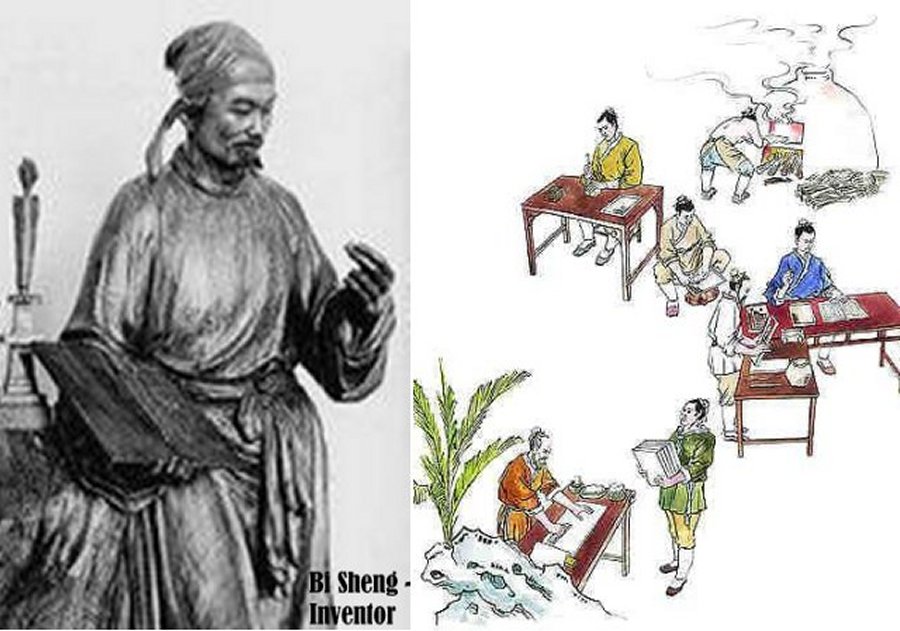MessageToEagle.com – Without the importation of paper and printing from China, Europe would have continued for much longer to copy books by hand, in a painstaking and slow process that could take more than a year for each book.
German printer Johannes Gutenberg did not invent movable type printing, he contributed with movable type mechanical printing technology in Europe in 1450.

More than four centuries earlier, the Chinese inventor Bi Sheng (990-1051 AD) created the world’s first known movable type system for printing.
His printing system was invented between 1041 and 1048 during the Song dynasty.
Block printing technique was an expensive and time-consuming process, for each carved block could only be used for a specific page of a particular book; additionally, a single carving mistake could ruin the whole block.
The new innovative system of printing created of Chinese porcelain, made books faster to print.
Bi Sheng carved individual characters on identical pieces of fine clay. Each movable type had on it only one Chinese character which was carved in relief on a small block of moistened clay.

After the block had been hardened by fire, the type became durable and could be used anytime and anywhere. The movable type pieces could be glued to an iron plate and easily detached from the plate.
Contrary to many claims, Bi Sheng’s clay types were not fragile but in fact, ‘hard and tough as horn’ as described by Bao Shicheng (1775-1885).
Characters could be assembled to print a page and then broken up and redistributed as needed. When the printing was finished, the pieces could be put away for future use.
Bi Sheng’s invention was recorded by Shen Kuo (1031-1095), the Chinese polymath, scientist and statesman, in his book The Dream Pool Essays’ in 1088 AD.
‘[Bi Sheng] took sticky clay and cut in it characters as thin as the edge of a coin. Each character formed, as it were, a single type. He baked them in the fire to make them hard. He had previously prepared an iron plate and he had covered his plate with a mixture of pine resin, wax, and paper ashes. When he wished to print, he took an iron frame and set it on the iron plate. In this he placed the types, set close together.
When the frame was full, the whole made one solid block of type. He then placed it near the fire to warm it. When the paste [at the back] was slightly melted, he took a smooth board and pressed it over the surface, so that the block of type became as even as a whetstone.
If one were to print only two or three copies, this method would be neither simple nor easy. But for printing hundreds or thousands of copies, it was marvelously quick.
As a rule he kept two forms going. While the impression was being made from the one form, the type was being put in place on the other. When the printing of the one form was finished, the other was then ready. In this way the two forms alternated and the printing was done with great rapidity…'(Needham, Joseph (1986). Science and Civilization in China: Volume 5)
It did not take Bi Sheng long to make 30,000 characters in common use.
Movable type printing developed very fast and spread to Korea, Japan, Vietnam, and finally to Europe, while based on clay type, type made of wood, lead, tin, and copper gradually appeared.
Copyright © MessageToEagle.com. All rights reserved. This material may not be published, broadcast, rewritten or redistributed in whole or part without the express written permission of MessageToEagle.com.






